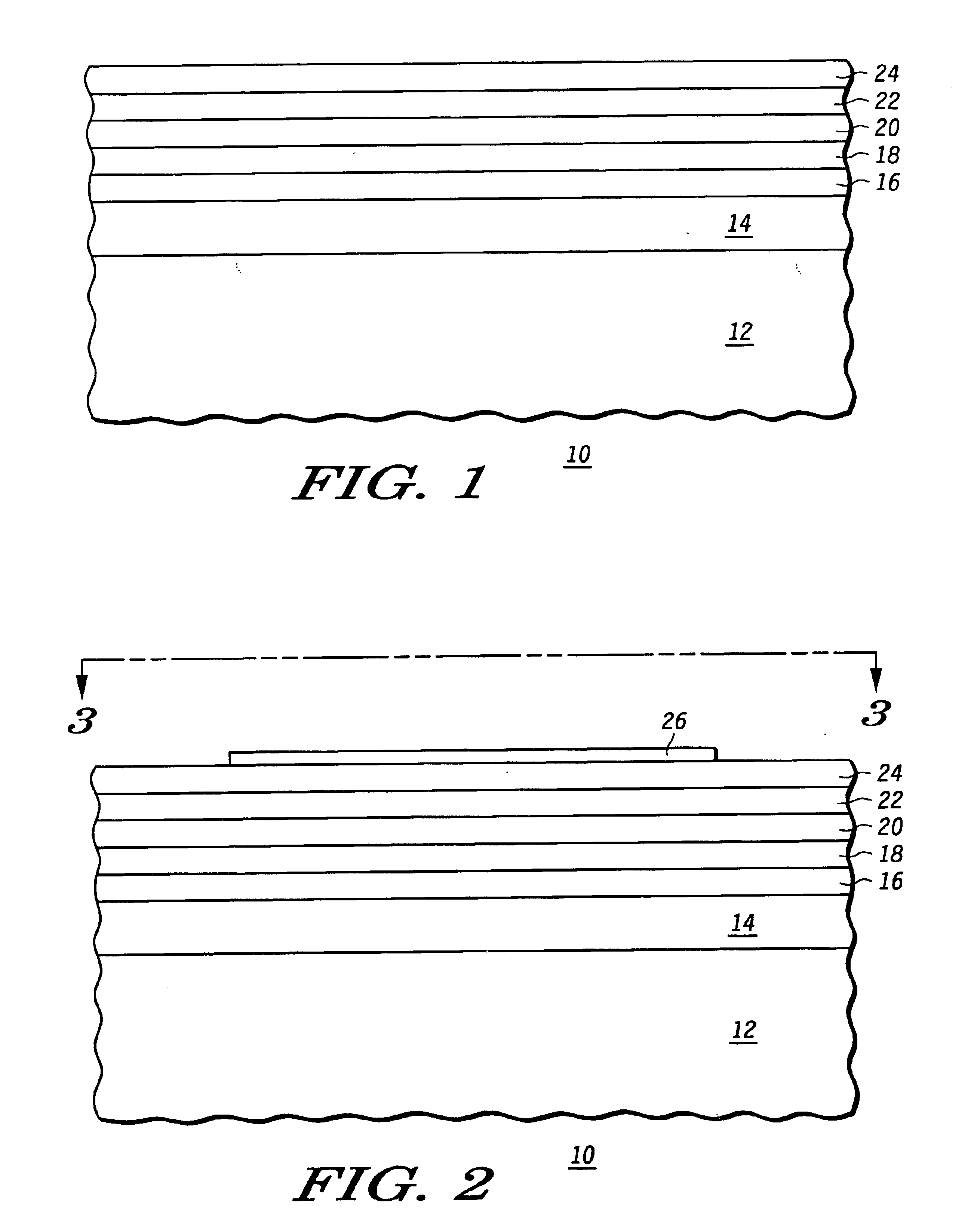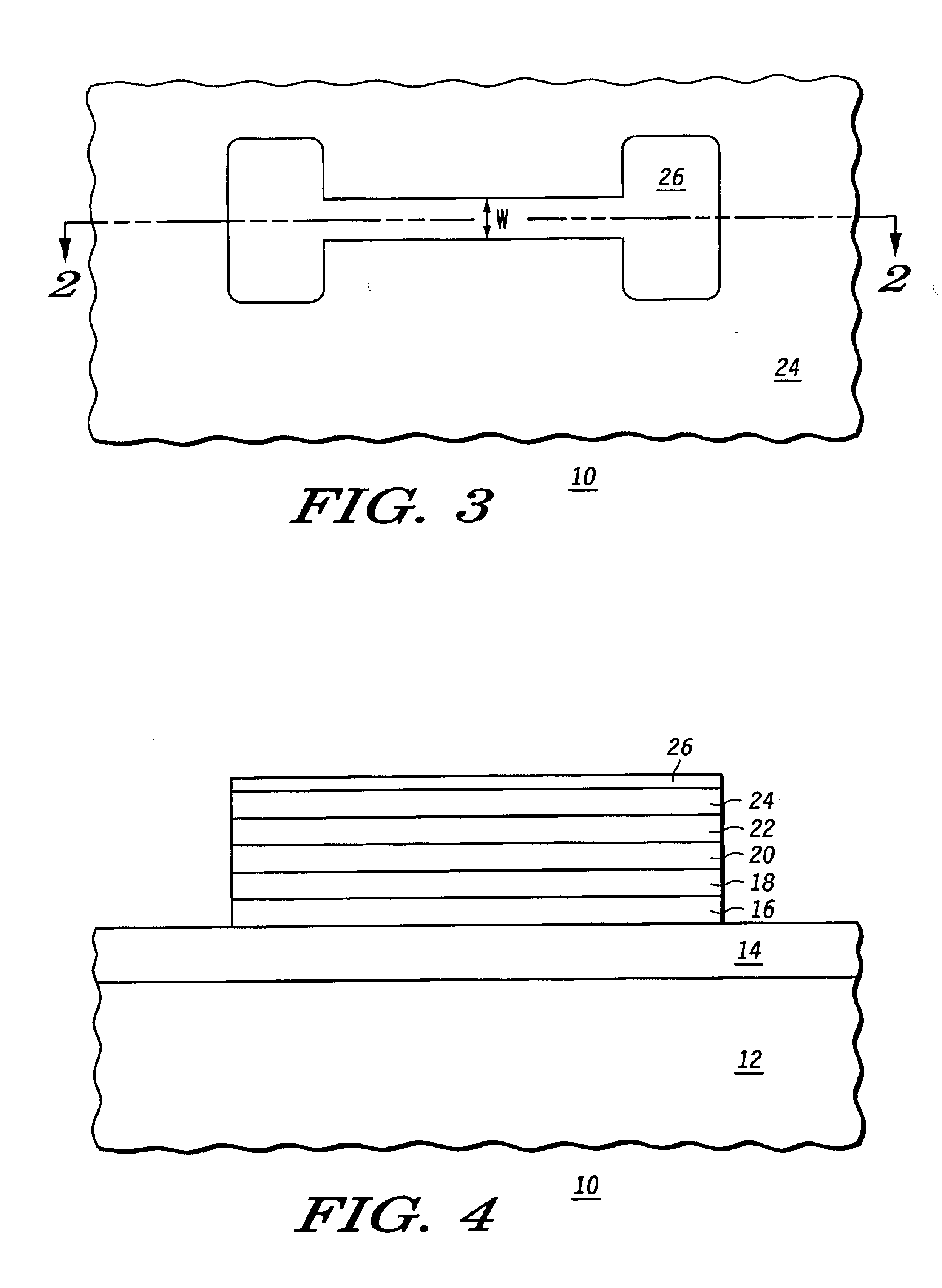Method of forming a transistor having multiple channels
a transistor and channel technology, applied in the field of semiconductor devices, can solve the problems of unfavorable leakage current (i.e. electron or hole flow) between the source and drain, requires significant additional area, and does not offer as much manufacturing control lithographically or spacer defined dimensions
- Summary
- Abstract
- Description
- Claims
- Application Information
AI Technical Summary
Benefits of technology
Problems solved by technology
Method used
Image
Examples
Embodiment Construction
[0019]Illustrated in FIG. 1 is a semiconductor device 10 having a substrate 12. In one form the semiconductor device 10 is an FET (field effect transistor). The substrate 12 may be formed of any type of material, either conductive, semi-conductive or insulative. In one form, substrate 12 is single crystal silicon. Other forms of substrate 12 may include silicon, silicon on insulator, silicon on sapphire, and silicon on nitride. An insulating layer 14 overlies the substrate 12. Insulating layer 14, in one form, is silicon dioxide. Overlying the insulating layer 14 is a semiconductor layer 16. In one form, semiconductor layer 16 is silicon or silicon germanium, but other semiconductor materials may be used. For example, germanium, silicon germanium carbon, gallium arsenide, gallium nitride and indium phosphide are other appropriate material compositions.
[0020]In another form, the integrated circuit substrate 12 is a silicon-on-insulator (SOI) bonded wafer having a silicon layer which ...
PUM
 Login to View More
Login to View More Abstract
Description
Claims
Application Information
 Login to View More
Login to View More - R&D
- Intellectual Property
- Life Sciences
- Materials
- Tech Scout
- Unparalleled Data Quality
- Higher Quality Content
- 60% Fewer Hallucinations
Browse by: Latest US Patents, China's latest patents, Technical Efficacy Thesaurus, Application Domain, Technology Topic, Popular Technical Reports.
© 2025 PatSnap. All rights reserved.Legal|Privacy policy|Modern Slavery Act Transparency Statement|Sitemap|About US| Contact US: help@patsnap.com



